
What questions both men and women need to do to permit women lawyers to advance in the profession
Gender balance and inequality in the legal profession has long been a festering sore and the International Women’s Day has pushed the issue once more to the forefront of consideration.
[adrotate banner=”90″]
A recent survey of top women lawyers in the UK law profession by Law.com saw some interesting views upon the area and what these women lawyers think should occur to bridge the gender gap.
What is one practical thing a law firm can do to help women rise through the ranks?
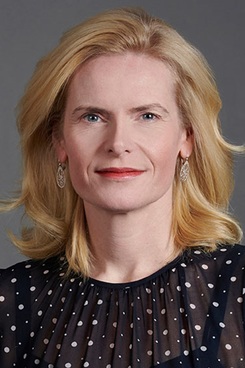
Jane Edwarde, head of real estate at Slaughter and May: “There are a few practices within law firms that could be improved to promote a healthier balance. Sending emails on a Sunday evening can unfortunately be quite a common practice, for example. These might well be tasks that are meant to be actioned on Monday, but they instead arrive unwelcome on a Sunday evening at 6pm!
“Similarly, scheduling conference calls at a time that’s more manageable for everyone, rather than 8am or 7pm is helpful. This won’t always be possible, but in instances where it is, these are small practical things that make our days more manageable and which add up over the course of a career.”
Samantha Lake Coghlan, co-chair of Goodwin Procter’s London office: “Law firms need to get to the point where they pivot their diversity and inclusion focus from education to meaningful action. I am lucky to be at a firm that has been pioneering in this regard: from being the first AmLaw 100 firm to have a female leader in the U.S. to our involvement in the ‘Move the Needle’ initiative, which sets public, ambitious diversity goals to achieve in the next five years.
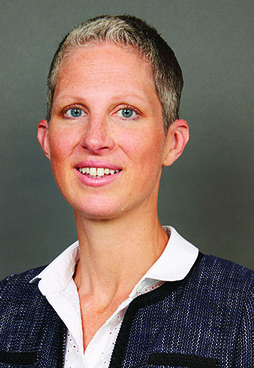
“Firms need to go beyond lip service and make commitments to D&I goals – there is still a fear of failure over setting targets.”
[adrotate banner=”91″]
Jules Quinn, employment partner at King & Spalding: “Listen to your clients. The recent GC for Diversity and Inclusion – a statement of support – shows the direction of travel here. Follow the money! Clients are frequently the biggest advocates for diversity and inclusion and sending work or taking work away because of gender diversity in any particular firm will move the needle.”
Melissa Butler, London managing partner at White & Case: “Coaching and mentoring are incredibly valuable. Having support and guidance from someone in a more senior position as you move through key stages of your career can really help focus the mind on what goals and ambitions you have and how you’re going to achieve them.
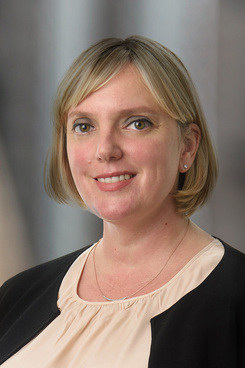
“The responsibility cannot all be on the women lawyers”
“Closely aligned to that, we’ve introduced sponsors for women lawyers on track for partnership and have programmes for women partners . . . But the responsibility cannot all be on the women lawyers. Firms have a responsibility to look at how they evaluate and promote female lawyers and ensure women are being given a fair shot.”
Karen Seward, global litigation head at Allen & Overy: “We need to open up our minds to what inclusion really means on the ground looking holistically at a team; nurturing what individuals are good at, but at the same time as accepting their weaknesses and factoring in how those weaknesses can be supplemented by the skills of others.
“We have to challenge each other to move from looking at potential talent and thinking, ‘I don’t see any value in you so you don’t have any,’ to ‘I don’t see any value in you, what am I missing?’”
What can men in the industry do to help their female colleagues’ career progression?
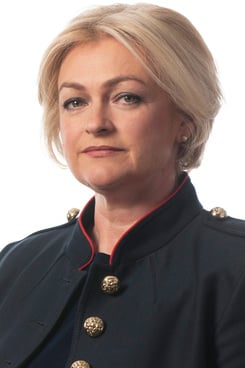
Sandra Wallace, DLA Piper joint managing director for the U.K. and Europe: ”Be honest and acknowledge that good intentions alone won’t get us where we need to be. Firms should not be afraid to set clear goals to improve the representation of women.”
Natasha Harrison, managing partner at Boies Schiller Flexner: “Take parental leave, take responsibility for childcare and other outside-of-work requirements so that the perception moves from it being a ‘woman’s thing’ to a ‘person’s thing’.”
Quinn, King & Spalding: ”Mentors and role models are important but we need to be joined up in this; we need the help of men because they make up the majority of partners and leaders.
“Diversity has a proven positive impact on the financial metrics of an organisation. It is in everybody’s interests to promote diversity and female talent. Most men are not sexist but many men do not think about the absence of women on pitch teams or client teams or slates for partnership promotion.”
Seward, A&O: “Be open minded to difference, ask questions and listen to understand, not just to reply, think about inclusiveness and difference before taking actions, and above all, challenge their own prejudices.
Edwarde, Slaughter and May: “The law is a steep learning curve, but it’s a fairly quick one — you are an experienced lawyer at 5-10 years qualified whereas in some industries, it might take 20 years plus to be regarded as senior. If you can keep people engaged, interested and enjoying their role – and managing the work life balance – for a relatively short period of time, then there’s a good chance they will get to the point when they can be considered for promotion.
“If women stay during those crucial development years, they have every chance of being promoted. By supporting lawyers in those early years, a more senior lawyer can make a huge difference to a junior lawyer’s career trajectory.”
What are the most common mistakes made by women lawyers pursuing a career in law, and the most common misconceptions about the industry?
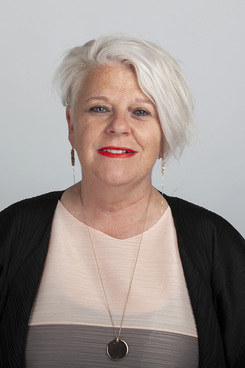
Seward, A&O: “Honestly, it is really unhelpful to think of this in terms of women making mistakes. Asking this question leads us to the conclusion that the problem is with the women, that we need to change and the solutions lie in ‘fixing the women’. We are 50% of the population!
“One practical thing women need to try to do is to have courage to bring our whole selves to work. Disguise is dead. Be completely authentic. No one wears Armani suits anymore. Whatever angle you are observed from, be the same.
“There is nothing wrong with being polished, and well prepared; indeed this is essential. But we have to be real – I profoundly disagree with the suggestion we all have to ‘lean in’.”
“Be completely authentic. No one wears Armani suits anymore. Whatever angle you are observed from, be the same.”
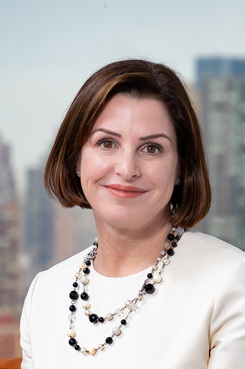
Harrison, Boies Schiller: ”One of the biggest misconceptions is that you have to be aggressive, ruthless and (seemingly) unemotional in order to succeed (i.e. all characteristics commonly associated with men rather than women).
“To correct those misconceptions leaders should be authentic and not afraid to promote different value systems; firms should also ensure there are strong role models (male and female) at all levels of seniority, including mid-senior associates. Young lawyers may find it hard to relate to or emulate a very senior partner, whereas a junior partner or senior associate may be more immediately accessible.”
Butler, White & Case: “The women I see pursuing a career in law are doing a lot of things right — they’re hard working, ambitious and are building strong networks to support them as they progress through their careers. And there is no one way or right way to pursue a career in law, and we all make mistakes or have second thoughts about decisions we’ve made. The important thing is to back yourself and trust your instincts.”
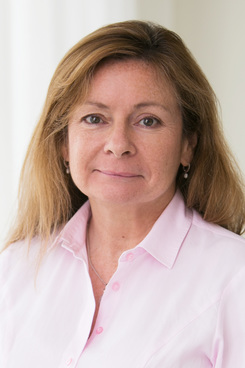
Frances Murphy, London managing partner at Morgan, Lewis & Bockius: “Perhaps more so in years past women that it was a sign of weakness to ask for help or that they may be passed over for promotion unless they were visible at all times in the office or if they could not spend evenings socialising. These fears may still exist depending on the law firm environment she is in.
“From our perspective, whilst providing an exceptional client service is of course imperative, it is essential that all lawyers receive the mentoring and support they require and the appropriate flexible working opportunities so that they feel they can achieve their best. This is something we care passionately about for all of our partners and employees.”
Taking some of the key steps towards helping women lawyers achieve their appropriate place in the law profession means taking some bold – but obvious – steps.
Recent News on LawFuel
- Legal AI Produces ‘Law Firm 2.0’The Rise of Law Firm 2.0: LegalTech Fund Backs AI-Powered Legal Startups… Read more: Legal AI Produces ‘Law Firm 2.0’
- Diamond & Diamond Lawyers Lead L’Oreal Hair Relaxer Class Action in CanadaSource: Diamon & Diamond Lawyers* The global beauty industry, valued at over $500… Read more: Diamond & Diamond Lawyers Lead L’Oreal Hair Relaxer Class Action in Canada
- NZ Law – Dentons NZ Announce Seven New PartnersDentons is delighted to announce the promotion of seven new partners. The… Read more: NZ Law – Dentons NZ Announce Seven New Partners
- Australian Court Issues Warning on Legal AI Citation Errors in Legal PracticeThe ‘ Hallucinated’ Legal AI Risks in Court A recent Australian Federal… Read more: Australian Court Issues Warning on Legal AI Citation Errors in Legal Practice
- Top 6 Questions You Must Ask a Car Accident Lawyer Before You Hire Them in 2025Image source: Shutterstock The aftermath of a car accident can be a… Read more: Top 6 Questions You Must Ask a Car Accident Lawyer Before You Hire Them in 2025
- NZ Law – Turner Hopkins partners with Beijing firm to ramp up China‑NZ legal workMandarin‑speaking team powers Kiwis’ legal access to China Takapuna’s Turner Hopkins—established in… Read more: NZ Law – Turner Hopkins partners with Beijing firm to ramp up China‑NZ legal work
- HWL Ebsworth Expands South Australian Presence with Botten Levinson AcquisitionAustralia’s largest legal partnership has just grown even bigger. HWL Ebsworth is… Read more: HWL Ebsworth Expands South Australian Presence with Botten Levinson Acquisition
- 5 Reasons to Hire a Car Accident Lawyer in Austin, TXArticle source: FVF Law, Austin TX Austin is one of the fastest-growing… Read more: 5 Reasons to Hire a Car Accident Lawyer in Austin, TX
- Law Firm Marketing – The 27 Invisible Places Where Clients Recommend Your Law FirmFrom Behind The Shadows – The ‘Invisible’ Law Firm Marketing Secrets 71… Read more: Law Firm Marketing – The 27 Invisible Places Where Clients Recommend Your Law Firm
- Beyond the Billable Hour: The KPIs That Truly Define Law Firm SuccessLaw Firm KPIs Lani Medina Navigating the complexities of a modern law… Read more: Beyond the Billable Hour: The KPIs That Truly Define Law Firm Success
- New Zealand Lawyer News – Meredith Connell Promotes 20Meredith Connell has announced promotions of 20 associates, eight senior associates and… Read more: New Zealand Lawyer News – Meredith Connell Promotes 20
- Legal Disruptor Hits Growth Spurt with Lloyds-Backed Investor on BoardEntrepreneurial Law Firm Like The Netflix of Law A private equity investor… Read more: Legal Disruptor Hits Growth Spurt with Lloyds-Backed Investor on Board